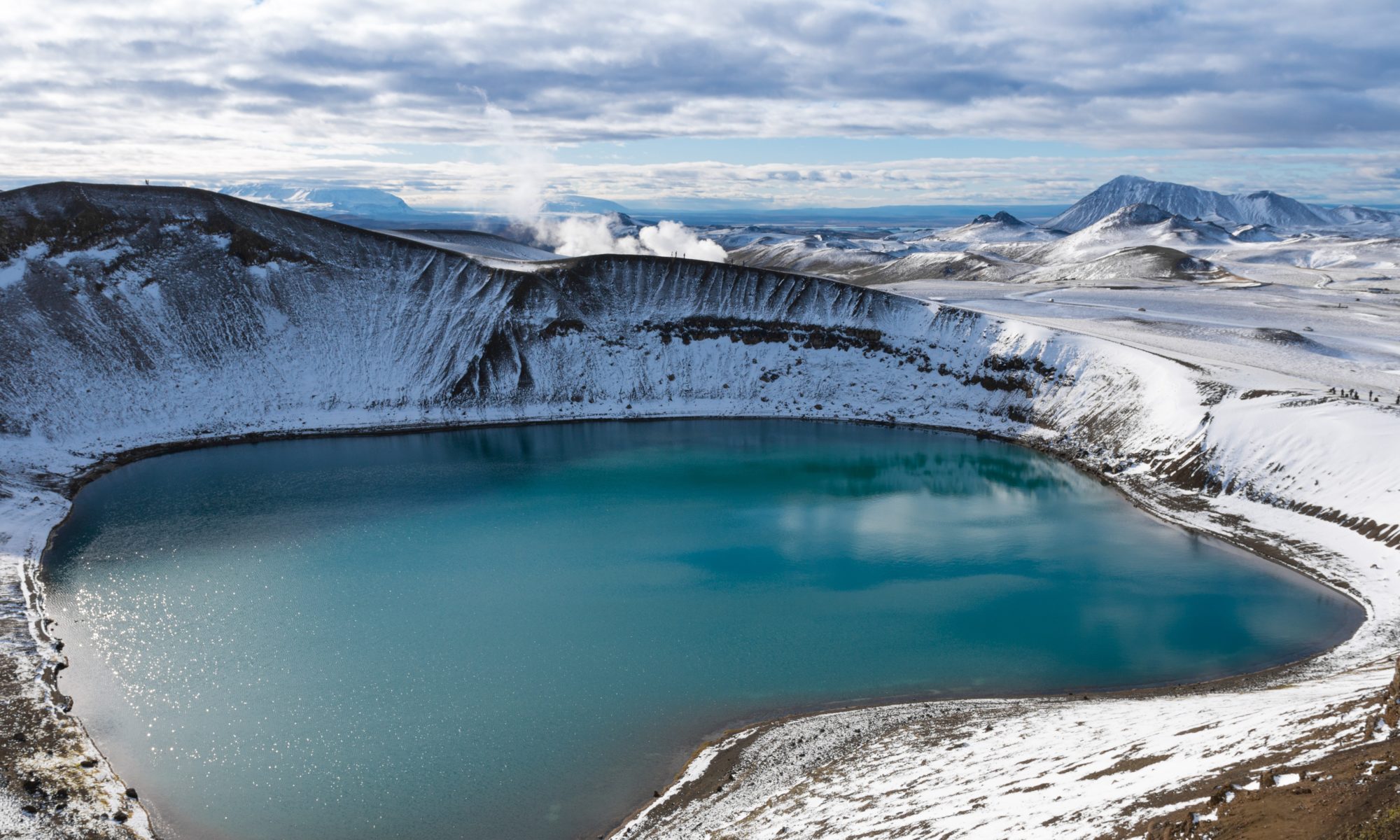Featured Image: Lake in a volcano’s crater at Mývatn, Iceland. Photo by Philipp Wüthrich on Unsplash.
Book: Iceland: Tectonics, Volcanics, and Glacial Features, Geophysical Monograph 247 (First Edition, 2020)
Author: Dr. Tamie J. Jovanelly
Figure Illustrations: Nathan Mennen
Additional Text: Emily Larrimore
Publisher: American Geophysical Union, John Wiley & Sons, Inc.
I have always wanted to go to Iceland and travel the countryside marveling at the island’s unique geology and icy wonder. Reading through Iceland: Tectonics, Volcanics, and Glacial Features by Dr. Tamie J. Jovanelly, I felt like I got my chance to tour Iceland; this time with a very experienced guide. Dr. Jovanelly has been to Iceland more than ten times since 2006 to explore and study and her familiarity with the place and the people who live there is engrained in this text.
“As a geologist I hope to not only capture the island’s natural beauty, but also to enhance it through detailed descriptions that link the relationships between structure, process, and time to the island’s evolution.”
pg. ix, Tamie J. Jovanelly
This book is not only for academics to use in geology classes but also for travelers and tourists who want to learn more about the island’s unique geologic and natural history. In that regard, the book combines both suggested tourism locations along with the history of the island. A potential limitation of the book as a tourism guide is that it is written with an expectation that the reader has a background in geology and understands the basic jargon and abbreviations for the discipline. If a reader has not taken an Earth science or geology class at the undergraduate level, then they may have a harder time with some of the discussions on tectonics and volcanics. There are a few additional explanatory boxes in the book, but those discussions, such as psychological impacts of natural hazards, economic impact of avalanches, and isotope chemistry, are provided because they are not readily known to a geology audience.

In its 15 chapters, the book walks the reader around Iceland exploring the interplay between tectonics, volcanics, and glacial features and highlights the best current places for sightseeing. The introduction chapter to each of the three sections (tectonics, volcanics, and glacial features) provides a thorough, well-researched overview of their impact on Iceland’s landscape. With 20 pages of citations at the end of the book, it is clear that a lot of time went into finding sufficient research and support for the topics discussed in the book, especially within the broader introduction chapters. Each section builds on the last section(s), though some information is repetitive in the later chapters.
There are large, bright figures and an abundance of beautiful photographs sprinkled throughout this book. I must give credit to Nathan Mennen in producing the phenomenal figures that supplement the text, including amazing maps and well-done adaptations of figures published elsewhere. Similar to the figures, the photographs are amazing images of Iceland’s landscape and provide a direct perspective of the geologic formations being discussed. I was surprised to find that two of the photographs in the book are of the same location. The two photographs are of a bridge that was washed out by a substantial flooding event (called a jökulhlaup) from a subglacial volcanic eruption, but the pictures capture the location from slightly different views. Overall, I think the abundance of photographs helps to transport you to Iceland, especially if you are not reading this book while traversing the country.
My favorite aspects of this book were the connections between the different landscapes across Iceland with human history. Throughout the book there were detailed examples of volcanoes’ influences on the humans living in Iceland. Examples ranged from the terrible impacts of volcanic eruptions on livestock farmers to how geothermal technology can produce hot water and electricity for the island’s inhabitants. In multiple locations around Iceland, the local clergy recorded medieval volcanic and glacial events. Their writings provide scientists the ability to understand the influence of Iceland’s natural hazards on humans living there for over three centuries. The anecdotes provided in the book are clear examples of how historical narratives have been used to refine the geologic and glacial history of Iceland.
Overall, my takeaway from Iceland: Tectonics, Volcanics, and Glacial Features is a substantially increased knowledge of Iceland’s geologic features and a greater appreciation for the island’s formidable and constantly changing landscape.
**This piece was originally published November 200 in the Association for Women Geoscientists Fall 2020 Gaea Newsletter (accessible only to members). It has been shortened and modified from its original version.

